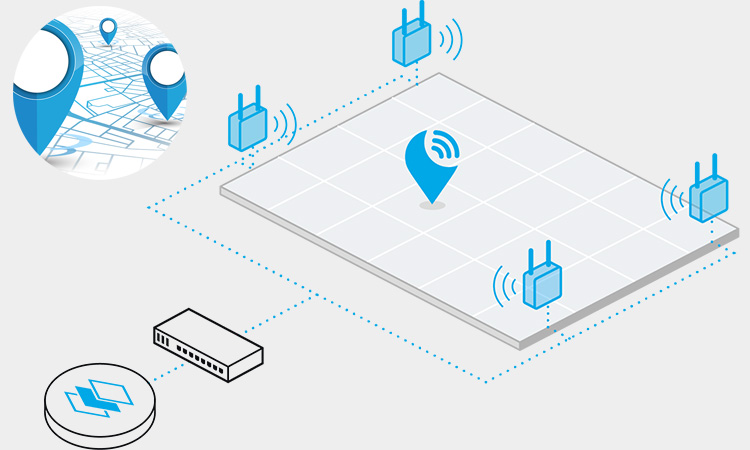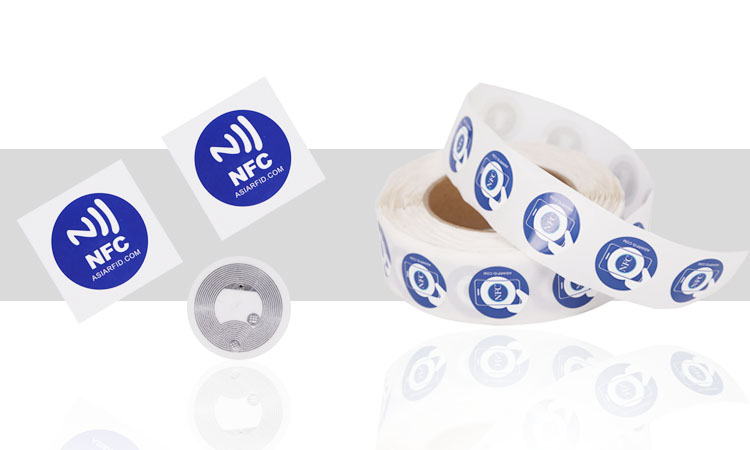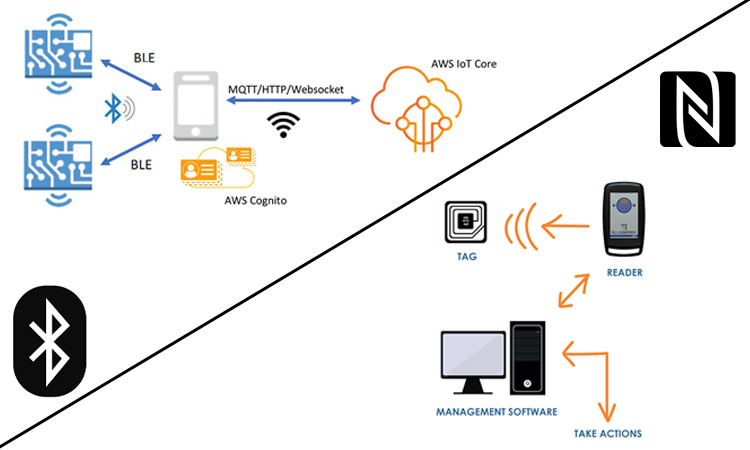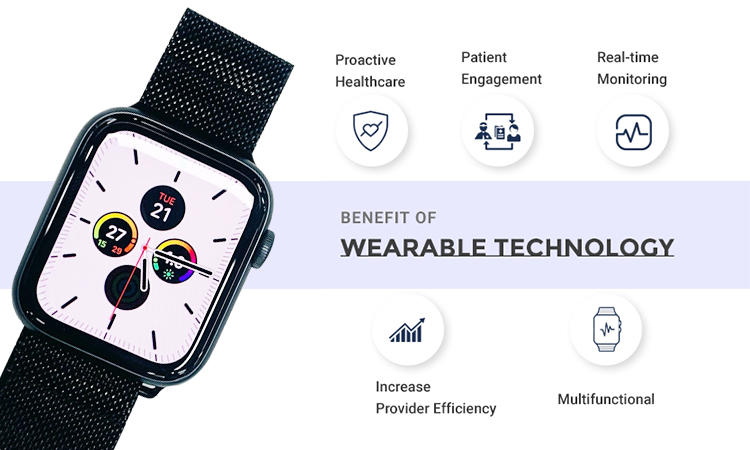반수동형 RFID 태그는 데이터 수집은 가능하지만 반드시 데이터 읽기 또는 전송은 가능하지 않은 RFID 태그 유형입니다. RFID 기술의 성숙도와 함께 우리는 종종 다양한 RFID 라벨 우리 삶에서. 이 레이블에서 활성, 수동 및 반수동 RFID 레이블이 무엇인지 알 수 있습니까? RFID 반 수동 태그에 대해 얼마나 알고 있습니까? 다음으로 반수동형 RFID 태그에 대해 자세히 살펴보겠습니다.

BAP(배터리 지원 수동형) 태그라고도 하는 반수동형 RFID 태그입니다. 능동 및 수동 RFID 기술의 이점을 결합합니다. 데이터 전송 중 신호 강도를 높이는 것과 같은 특정 기능에 전원을 공급하는 내장형 배터리가 특징입니다. 이는 RFID 시스템의 효율성과 성능을 향상시킵니다.
수동형 RFID 태그보다 대중적입니다. 상대적으로 확장된 판독 범위를 가지며 본체는 온보드 환경 센서를 수용합니다. 태그가 부착된 항목의 경우 반수동 태그가 생태 경험을 기록하는 데 더 도움이 됩니다. 실험실 직원에게 탁월한 편의성을 제공합니다.
테스트 결과에 따르면 태그가 판독기에서 4미터 떨어져 있고 21의 출력 속도를 읽으면 50% 읽기 속도 데시벨의.
RFID 기술 개요
RFID(Radio Frequency Identification) 기술은 전파를 사용하여 RFID 태그와 판독기 간에 데이터를 무선으로 전송합니다. RFID 태그에는 정보를 저장하고 전송하는 안테나와 마이크로칩이 포함되어 있습니다. 바코드와 달리 RFID 태그는 직접적인 시선 없이 읽을 수 있습니다. 이를 통해 보다 빠르고 자동화된 데이터 캡처가 가능합니다.
반수동형 RFID 태그는 효율성 중심 애플리케이션에 선호되는 고유한 특성을 가지고 있습니다. 활성 태그에 비해 배터리 수명이 길어 배터리를 자주 교체할 필요가 없습니다. 또한 완전히 활성화된 태그에 대한 비용 효율적인 대안이므로 예산 제약이 있는 조직에서 보다 쉽게 액세스할 수 있습니다. 패시브 기능과 선택적인 배터리 지원 기능을 결합하여 최적화된 성능과 리소스 활용을 보장합니다.
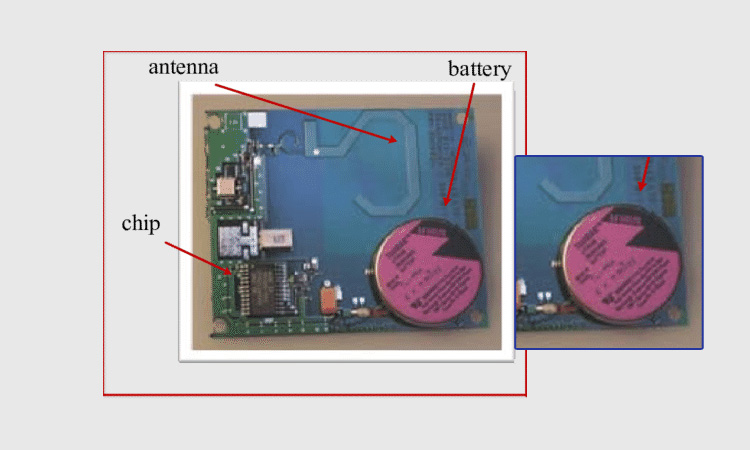
세미패시브 RFID 라벨에는 두 가지 이유로 배터리가 포함되어 있습니다. 하나는 IC에 전원을 공급하기 위해 배터리가 필요하다는 것입니다. 순방향 링크는 일반적으로 태그에 전원을 공급하고 태그 통신 기능도 제공합니다. 그 범위는 일반적으로 리턴 링크보다 훨씬 짧습니다. 반환 링크는 판독기에서 태그까지 그리고 다시 판독기로의 왕복을 나타냅니다. 따라서 순방향 링크보다 더 확장된 범위를 가집니다. 패시브 태그 판독 범위의 제한 요소는 거리가 아닌 전원 공급 장치임을 보여줍니다. 태그는 신호를 디코딩할 수 있는 안테나에서 얼마나 떨어져 있는지가 아니라 안테나에서 전원이 공급되는 위치입니다. 따라서 태그 내부의 배터리는 IC에 지속적으로 전원을 공급할 수 있으며 수동 태그보다 읽기 범위가 더 확장됩니다.
두 번째는 환경 센서가 태그에 있다는 것입니다. 생태학적 센서는 작동을 보장하기 위해 지속적인 전원이 필요합니다. 또한 태그 내부의 IC보다 높은 전력 수준이 필요합니다. 패시브 태그에는 내부 배터리가 없으므로 환경 센서에 안정적인 전원을 제공할 수 없습니다. 판독기가 공급하는 에너지를 수동적으로만 받을 수 있으며 이 역시 여전히 매우 제한적입니다.
패시브 RFID 태그에 배터리를 추가하면 센서와 태그 IC에 안정적인 전원을 공급할 수 있습니다. 물론 배터리가 있어도 액티브 RFID보다 저렴하다.
반 수동형 태그 내부의 센서는 지속적으로 데이터를 수집할 수 있습니다. 리더가 태그에 질문할 때 고유 ID로 해당 데이터를 전송할 수도 있습니다. 반수동 태그에는 많은 가능성이 있습니다. 예를 들어 물체가 움직일 때 물체의 온도 경험을 자동으로 수집할 수 있습니다. 온도에 민감한 약물이나 식품과 같은 응용 분야에 매우 적합합니다. 세미 패시브 태그는 물체가 운송 중에 특정 온도 제한을 초과할 때 효과적으로 기록할 수 있습니다. 시간을 기록하면 약의 유통기한이나 효능을 대략적으로 계산할 수 있습니다. 물론 온도, 압력, 진동 등을 수집할 수 있는 센서를 태그에 장착할 수 있습니다.
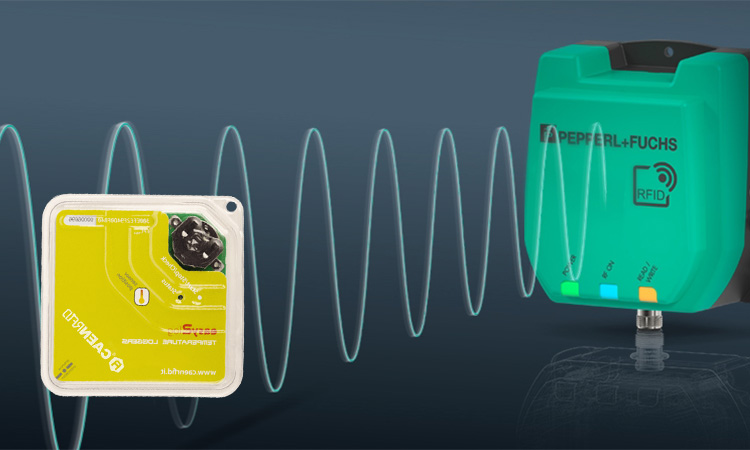
대부분의 경우 RFID 세미 패시브 태그는 휴면 상태입니다. 내부의 전원 공급 장치는 데이터를 보유하고 있는 부분에만 전원을 공급하고 나머지 부분에는 아무 것도 하지 않습니다. 상대적으로 낮은 전력 소비로 인해 오랜 시간 동안 지속될 수 있습니다.
태그가 판독기의 인식 범위에 들어가면 전자기 유도가 발생합니다. RFID 리더는 먼저 저주파 신호로 라벨을 활성화하여 태그가 작동 상태가 되도록 합니다. 그런 다음 마이크로파 신호 및 태그 데이터 전송. 먼저 저주파 신호 정밀 포지셔닝 활성화 후 고주파 신호로 작업합니다. 즉, HF 신호 범위 내에서 여러 개의 저주파 판독기가 서로 다른 위치에 배치됩니다.
이 판독기는 반능동 RFID 레벨 활성화를 기반으로 합니다. 이 판독기는 주로 반능동 RFID 태그를 활성화합니다. 이러한 방식으로 작업하면 제품 포지셔닝, 정보 수집 및 배송 기능이 가능합니다. 일부 제품의 엄격한 환경 요구 사항을 획기적으로 충족합니다.
세미 패시브 RFID의 장점
- 장거리 감지
반수동형 RFID 태그는 정보를 다시 브로드캐스팅할 수 있는 활성 에너지원이 있으므로 수동형 태그보다 더 먼 거리에서 읽을 수 있습니다. 사용 환경 및 태그 유형에 따라 최대 30m까지 읽을 수 있습니다. 따라서 창고 또는 제조 시설에서 장거리 자산을 추적하는 데 이상적입니다.
- 더 긴 판독 범위
RFID 반수동 태그에 배터리가 있으면 수동 RFID 태그에 비해 판독 범위가 더 길어집니다. 이는 태그가 더 먼 거리에서 데이터를 전송할 수 있기 때문입니다. 더 먼 거리에서 태그를 읽을 수 있습니다. 이것은 멀리서 태그를 읽어야 하는 애플리케이션에서 특히 유용합니다. 보다 일반적인 것 중 일부는 공급망 관리 및 재고 추적입니다.
- 향상된 정확도
RFID 반수동 라벨의 배터리가 제공하는 에너지는 향상된 정확도로 태그를 읽을 수 있게 합니다. 배터리가 있는 이러한 태그는 더 강한 신호를 방출할 수 있습니다. 판독기가 데이터를 더 쉽게 수신하고 오류 가능성을 줄입니다.
- 비용 절감
반수동형 RFID 태그의 비용은 일반적으로 능동형 RFID 라벨보다 저렴합니다. 주기적으로 교체해야 하는 추가 배터리와 센서를 비롯한 기타 구성 요소가 필요하지 않기 때문입니다. 이는 대규모 추적 응용 프로그램을 위한 비용 효율적인 옵션이 됩니다.
- 데이터 용량 증가
내부 메모리와 배터리로 인해 반수동형 RFID 태그는 수동형 태그보다 더 많은 데이터를 저장할 수 있습니다. 이를 통해 자산을 보다 정확하게 추적하고 제품 일련 번호 및 자산 위치 데이터와 같은 보다 복잡한 정보를 저장할 수 있습니다.
- 향상된 개인정보 보호
RFID 반수동 라벨은 사용자가 자신을 인증한 다음 활성화 신호를 보내 태그 데이터를 읽어야 하므로 수동 RFID 태그보다 더 안전한 경우가 많습니다. 이렇게 하면 누군가 악의적으로 태그를 읽고 기밀 데이터에 액세스할 가능성을 줄일 수 있습니다.
- 내구성 및 낮은 유지 보수
RFID 세미패시브 태그는 외부 부품 없이 플라스틱으로 밀봉되어 내구성이 뛰어나고 마모에 강합니다. 또한 배터리를 자주 교체할 필요가 없기 때문에 유지 관리가 거의 필요하지 않습니다.
- 유연성
패시브 세미 RFID 태그는 더 작고 추가 에너지원이 필요하지 않기 때문에 다양한 애플리케이션에서 사용할 수 있습니다. 크기가 작기 때문에 열악한 산업 및 소매 환경에서 사용할 수 있습니다.
- 사용의 용이성
반수동형 RFID 태그는 활성화 신호로 태그를 활성화한 다음 칩에 저장된 데이터를 읽기만 하면 되기 때문에 설정 및 관리가 쉽습니다. 이것은 자산 추적 응용 프로그램에 널리 사용되는 선택입니다.
여기에는 배터리와 리더에 신호를 능동적으로 방출하는 내부 송신기가 포함되어 있습니다. 태그가 판독기 범위 내에 들어오면 두 태그가 자기장 결합을 생성합니다. 태그는 능동적으로 데이터를 리더에 전송합니다. 능동형 RFID 태그는 크기가 작기 때문에 보통 리벳, 나사 등을 통해 스마트폰의 보호 케이스에 내장된다.
일반적으로 장거리에서 라벨을 읽는 대규모 애플리케이션에 사용됩니다. 가장 일반적인 응용 분야는 건설, 석유 및 기타 산업 및 물류 응용 분야입니다. 일반적으로 고주파수와 장거리로 데이터를 전송할 수 있습니다. 더 일반적인 것은 전자 통행료입니다. 패시브, 세미패시브보다 중요하지만 용량도 큽니다. 온도, 습도 및 기타 데이터를 수집하는 환경 센서가 있습니다. 따라서 고가의 민감한 자산을 보호하는 애플리케이션으로 사용할 수 있습니다.
또한 명백한 제한 속성이 있습니다. 더 높은 비용, 제한된 배터리 수명 및 더 큰 크기가 필요합니다. 고부가가치 자산을 추적하고 보호하는 데 여전히 매우 인상적인 ROI를 가지고 있습니다.
에너지를 전달하기 위해 리더기에 의존하는 수동적 요소입니다. 이 때문에 리더는 일반적으로 매우 가까운 거리에서만 태그를 읽을 수 있습니다. 일반적으로 일부 소규모 응용 프로그램 및 RFID 인벤토리 시스템은 수동 RFID 태그를 사용합니다.
부인할 수 없는 장점도 있습니다. 태그당 비용은 다른 두 개보다 낮습니다. 수명이 더 길고 거의 모든 제품에 내장될 수 있습니다. 주로 항목 수준 추적 응용 프로그램, 배지 액세스 제어 등에 사용됩니다.
액티브와 패시브의 중간 제품입니다. 반수동형 RFID 태그는 크기와 제조 면에서 수동형 RFID 태그와 유사합니다. 콤팩트하고 생산하는 데 시간이 덜 걸립니다. 그러나 활성 RFID 태그와 같은 전원도 포함합니다.
둘 다의 많은 장점을 결합합니다. 이러한 장점에는 능동 태그보다 낮은 생산 가격과 수동 태그보다 긴 판독 거리가 포함됩니다. 그리고 부분 센서 및 메모리 기능을 지원합니다. 물론 배터리 수명이 제한된다는 치명적인 단점도 있습니다. 일반적으로 액세스 제어 항목, 항목 위치, 영역 위치 관리, 보안 경보 등에 사용됩니다.
또한 읽기: RFID 인벤토리 시스템: 장단점은 무엇인가요?
이 표에는 수동, 반수동 및 능동 RFID 태그 간의 주요 차이점이 요약되어 있습니다.
| 특징 | 패시브 RFID 태그 | 반수동형 RFID 태그 | 활성 RFID 태그 |
|---|---|---|---|
| 전원 | 내부 전원 없음, 리더로 전원 공급 | 내부 배터리는 일부 구성 요소에 전원을 공급하지만 전송에는 사용하지 않습니다. | 내부 배터리는 구성 요소와 변속기 모두에 전원을 공급합니다. |
| 범위 | 더 짧은 범위, 일반적으로 30피트 미만 | 패시브보다 긴 범위, 최대 100피트 이상 | 수동 또는 반 수동보다 더 긴 범위, 최대 수백 피트 |
| 비용 | 태그당 비용 절감 | 패시브보다 태그당 비용이 높지만 액티브보다 낮음 | 태그당 더 높은 비용 |
| 크기 | 더 작고 가벼운 무게 | 패시브 태그와 비슷한 크기와 무게 | 더 크고 무거움 |
| 애플리케이션 | 재고 추적과 같은 근거리 애플리케이션에 이상적 | 자산 추적과 같이 더 긴 범위가 필요한 애플리케이션에 적합 | 차량 추적 또는 물류와 같이 장거리 실시간 추적이 필요한 애플리케이션에 가장 적합 |
메모: 이는 일반적인 특성일 뿐이며 RFID 태그의 특정 기능과 기능은 제조업체, 빈도 및 기타 요인에 따라 크게 다를 수 있습니다. 또한 일부 RFID 태그는 이 세 범주 사이의 "회색 영역"에 속할 수 있습니다. 예를 들어 "배터리 보조 수동" 또는 "반능동" 태그라고 할 수 있습니다.
반수동형 RFID 라벨은 일반적으로 수동형 RFID 태그보다 더 긴 판독 범위와 고급 기능을 제공합니다. 활성 RFID 태그의 고전력 및 지속적인 통신이 없는 애플리케이션에 적합합니다. 반수동형 RFID 태그 애플리케이션의 몇 가지 예는 다음과 같습니다.
- AeroScout T2 태그: 의료, 산업 및 기업 환경에서 자산 추적에 사용됩니다. 배터리 수명이 길고 실내 및 실외 추적에 사용할 수 있습니다.
- Metalcraft Sentry Flex 태그: 열악한 환경에서 자산 추적에 사용할 수 있는 견고하고 내구성이 뛰어난 반수동형 RFID 태그입니다. 최대 20피트의 판독 범위를 제공하며 금속 표면에 장착할 수 있습니다.
- Xerafy MicroX II RFID 태그: 소형 고성능 세미패시브 RFID 태그입니다. 도구, 의료 장비 및 IT 자산과 같은 작은 자산을 추적하는 데 사용할 수 있습니다. 최대 10피트의 판독 범위를 제공하며 열악한 환경에서 사용하도록 설계되었습니다.
- Invengo XC-RF807 RFID 태그: 자산 추적을 비롯한 다양한 애플리케이션에 사용할 수 있습니다. 최대 26피트의 판독 범위를 제공하며 금속 표면에 장착할 수 있습니다.
어떤 상황에서 사용할 수 있습니까?

활성 RFID 태그는 433MHz – 960MHz 사이의 고주파수에서 작동할 수 있습니다. 데이터를 전송하는 데 훨씬 더 긴 범위를 제공합니다. 리더는 100미터 이상의 거리에서 태그에 저장된 데이터를 읽을 수 있습니다. 실시간 위치 추적, 재고 및 자산 관리에 가장 적합한 선택입니다. 이 외에도 다양한 다른 주파수에서 작동할 수 있습니다. 특히 더 낮은 주파수에서는 물과 같은 물질에도 사용할 수 있습니다. 금속.
패시브 RFID 라벨은 꽤 많은 변형이 있습니다. 가장 일반적인 것은 인레이와 하드 태그입니다. 인레이는 일반적으로 가장 저렴한 옵션인 접착제로 물리적 자산에 부착됩니다. 하드 패시브 태그는 견고하고 내구성이 뛰어난 플라스틱 및 금속과 같은 재료로 만들어집니다. 가혹한 환경에서 오랜 시간 동안 머물러야 하는 제품에 이상적입니다.
반 수동형 RFID 라벨은 이전 두 가지 유형의 태그가 혼합된 것입니다. 능동 및 수동에 비해 비용 효율적입니다. 항목의 환경 및 상태 모니터링을 위한 이상적이고 저렴한 옵션입니다.
작업자는 필요와 제품의 특성에 따라 올바른 라벨을 선택해야 합니다. 특히 액티브와 세미패시브 중에서 선택하십시오. 제품이 고유한 경우 주변 환경을 고려해야 합니다. 제품의 특수성과 비용 효율성에 따라 패시브 세미 RFID 태그가 가장 적합할 수 있습니다. 창고 재고를 추적하고 관리한다고 가정하면 수동형 RFID 태그가 이상적인 선택일 수 있습니다.
반수동형 RFID 태그는 능동형 RFID 태그 및 수동형 RFID 태그만큼 널리 알려져 있지 않을 수 있습니다. 그러나 실제 생산 응용 측면에서 더 저렴하고 사용 범위가 더 넓습니다. 운송 중 환경 요구 사항이 엄격한 제품에 사용하기에 적합합니다.
세미 패시브 RFID 태그 FAQ 정보
-
세미 패시브의 의미는 무엇입니까?
"반수동"이라는 용어는 일반적으로 부분적으로 능동적이고 부분적으로 수동적인 시스템 또는 장치를 의미합니다. 즉, 능동 시스템과 수동 시스템의 요소를 결합합니다. 이 하이브리드 접근 방식을 통해 반수동형 RFID 태그는 능동 및 수동 시스템의 이점 중 일부를 활용할 수 있습니다. 특히 능동형 RFID 태그처럼 부분적으로 전원이 공급되고 능동적으로 데이터를 전송합니다. 하지만 완전 활성 태그보다 더 적은 비용으로 더 작은 배터리로 작동할 수 있는 일부 수동 구성 요소도 있습니다.
-
세미 패시브 RFID 태그 비용은 얼마입니까?
반수동형 RFID 태그 가격에 영향을 미칠 수 있는 몇 가지 요인이 있습니다. 이러한 요소에는 태그 유형, 태그가 작동하는 주파수 범위, 주문 수량 등이 포함됩니다. 일반적으로 가격은 단위당 몇 센트에서 몇 달러에 이르기까지 매우 다양합니다. 반수동형 RFID 태그의 비용은 시장 상황과 특정 요구 사항에 따라 변동될 수 있다는 점에 유의해야 합니다. 최신 가격 정보는 평판이 좋은 공급업체에 문의하는 것이 좋습니다.
-
반수동형 RFID 태그의 범위에 대해 궁금한 점이 있다면 여기에 영향을 미칠 수 있는 몇 가지 요인이 있습니다. 이러한 태그의 범위는 일반적으로 주파수와 전원 출력에 따라 달라지며 10~100피트까지 다양합니다. 이 범위는 더 큰 안테나를 사용하여 확장할 수 있습니다. 또한 반수동형 RFID 태그의 실제 범위는 사용 중인 특정 환경과 장비에 따라 달라집니다.



